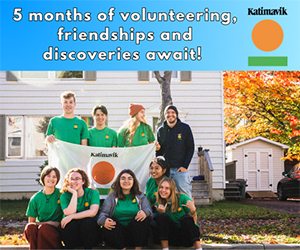At last month’s Department Heads meeting, our Vice Principal presented a slide show that one of our English teachers, who teaches our Grade 11 and 12 Black Voices English class, developed for staff. The slide show outlined specific strategies that teachers could use or adapt depending on their subject area when teaching racialized students. Equity and diversity concerning our racialized students have long been topics that many white teachers have been uncomfortable discussing. Thankfully, over recent years, through many professional development sessions, policy changes, practices to remove barriers, equity surveys, and Black student success initiatives, the necessary dialogue of how best to support our racialized students has increased in frequency and intensity. Today, educators are looking for resources; asking for help; participating in Ministry-approved programs and listening to the needs of our racialized students and parents.
A couple of years ago, Ms. A (who happens to be white) proposed a new course called Black Voices. The course examines challenging texts written by Black authors. The lens and content of the course focuses on the historical and contemporary Black experience. Students analyze challenging literary texts from various periods, countries, and cultures. Students then create oral, written, and media texts in a variety of forms. When this course was first proposed we were unsure as to whether students would be interested in taking it. However, the course is in its third year and has grown exponentially from one to six sections being taught across two grades, indicating quite clearly that our students want to take contemporary courses that speak specifically to their lived experience. I must mention that although many of our black students take the Black Voices English course, the course is open to all students. Ms. A was on to something. So, when I watched her slide show, I started thinking and reflecting about ways that Guidance supports and promotes equity and diversity in our school and the impact these supports have on not only our racialized students but our school community.
Below are three strategies we, in Guidance, can employ:
1 – Cultural Competence and Sensitivity Training:
Thankfully, our school board does a fantastic job in providing ongoing cultural competence and sensitivity training for guidance counsellors to enhance our understanding of diverse backgrounds, identities, and cultures, including but not limited to the delivery of anti-racist education and counselling practices for Guidance staff. This training has included learning about our implicit biases, stereotypes, and the impact of systemic inequalities on students, with a focus of how the school system has reinforced a Eurocentric style of teaching for generations. Through these sessions, guidance counsellors are encouraged to reflect on their own biases and assumptions, fostering self-awareness and a commitment to continuous learning.
2 – Personalized Guidance and Support:
As guidance counsellors, we are called to implement personalized guidance and support services that consider each student’s unique background, strengths, challenges, and goals. If we are unsure of what to say or how to help, we call on our support staff (i.e. CYW, SW, Mental Health Worker) as well as our Equity Leads to assist. Our goal is to foster a safe space for students to discuss their experiences, concerns, and aspirations, while acknowledging their identity and cultural background and experience. Further, within our independent Guidance Departments, it is our responsibility to ensure that counselling materials and resources are culturally responsive, representing a diverse range of multicultural experiences and perspectives.
3 – Community Outreach and Collaboration:
Probably one of the most impactful ways we can foster inclusive and diverse support is through establishing partnerships with community organizations and advocacy groups to create a network of support for students from various backgrounds. Within our school board, we have Equity Leads and our Guidance Coordinator who have organized workshops, events, and information sessions that address the specific needs and concerns of marginalized groups. Moreover, as a Guidance department, we have collaborated with teachers and administrators to integrate inclusive practices into the overall school culture, promoting diversity in curriculum, classroom discussions, and extracurricular activities. At our school specifically, one of our Guidance members began a BSA (Black Student Association) last year and its popularity has soared. Several initiatives and events are led by this group of students, including post-secondary workshops tailored to black and Indigenous students, guest speakers, goal setting sessions, as well as fun activities.
It is of upmost importance to foster diversity and inclusion within our Canadian high schools. Ms A’s Black Voices English course is a positive step in the right direction. Although we have done some good work, we have a lot more work to do to create a more inclusive environment for our racialized students. High school guidance counsellors can contribute to a more equitable and inclusive environment by learning about their biases and attending professional development sessions offered by their school board that focus on the relationship between anti-black racism and student success; provide personalized support for students and not use a one-solution-fits-all model of counselling; and by actively engaging with the broader community to create a supportive network. These strategies help ensure that all students, regardless of their backgrounds or identities, feel valued, understood, and supported in their educational journey. By prioritizing equity and diversity, high schools cultivate an environment that prepares students not only academically but also socially, equipping them with the skills necessary for success in an increasingly diverse and interconnected world.
By: Anna Macri









